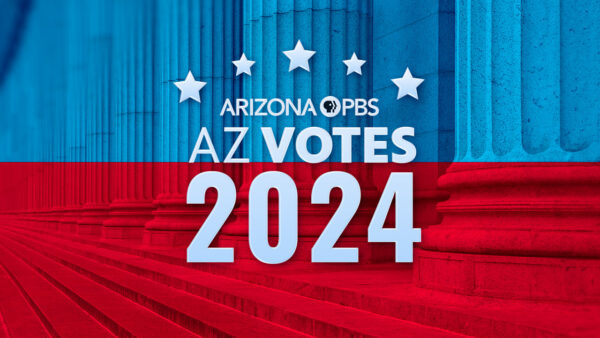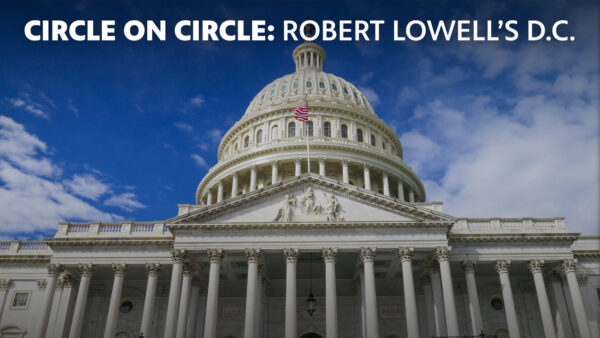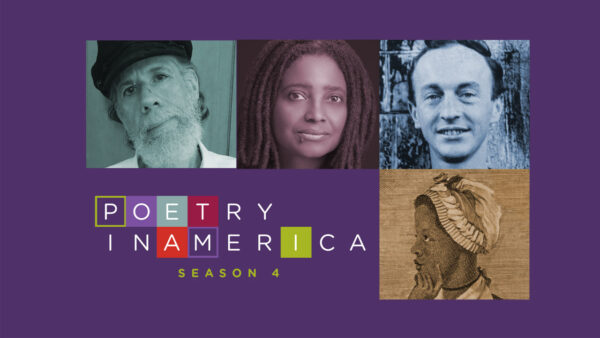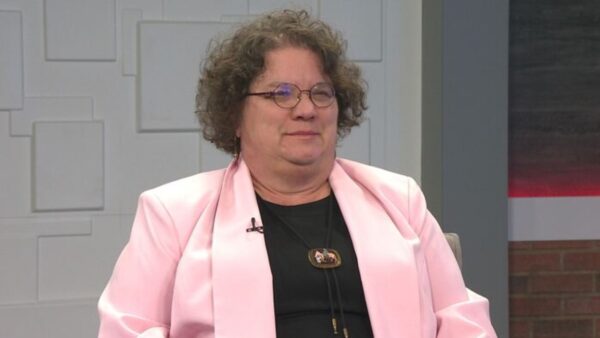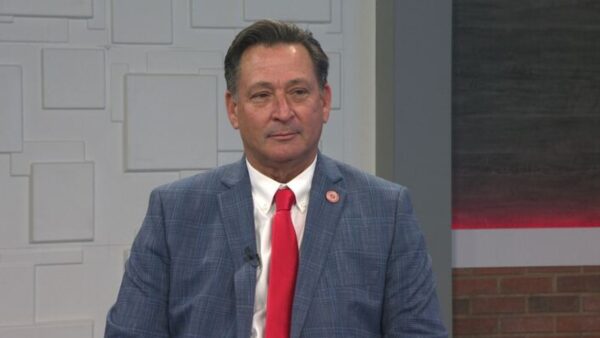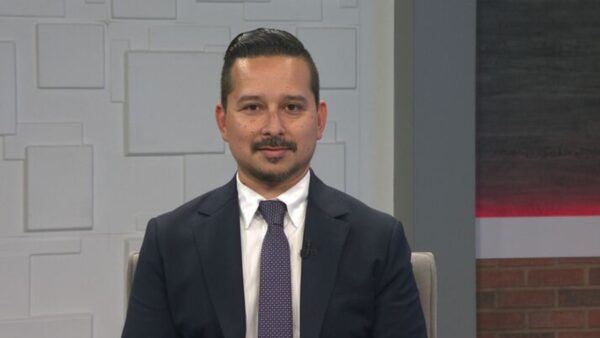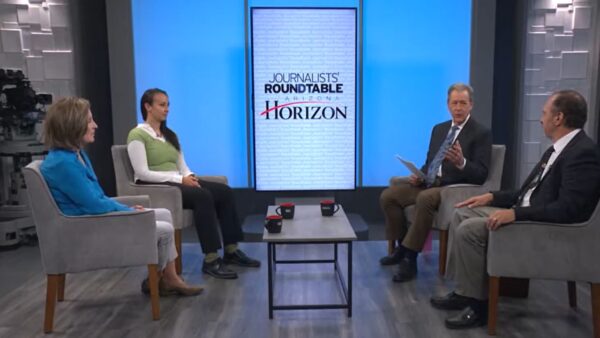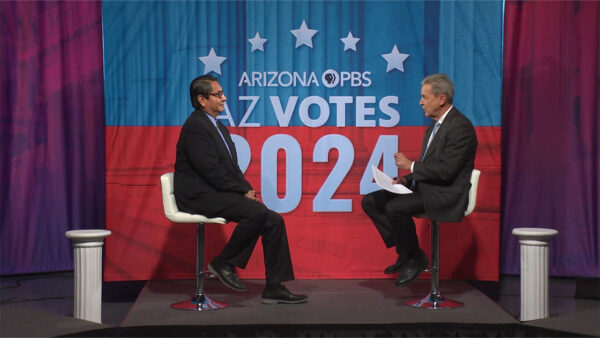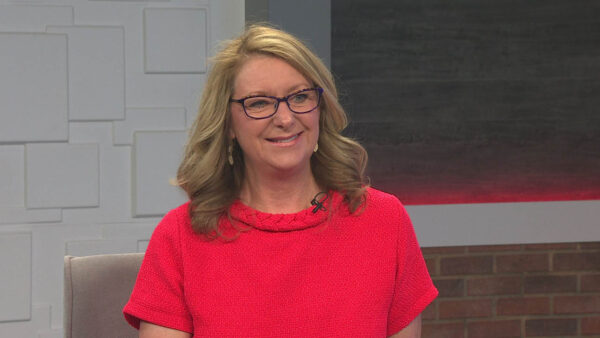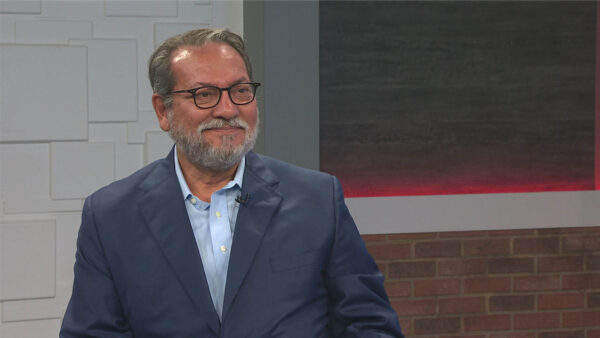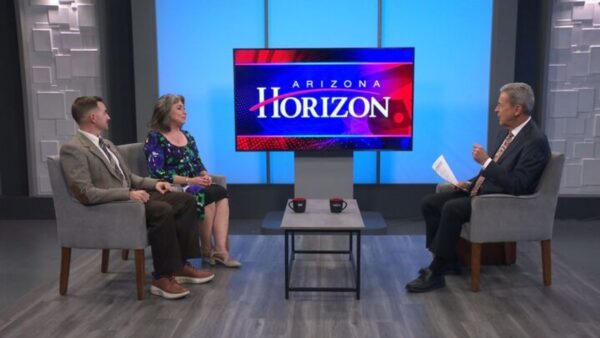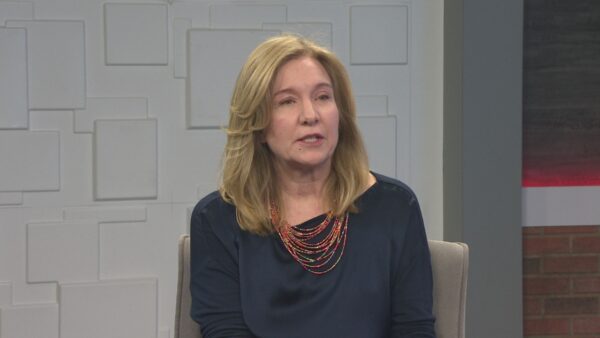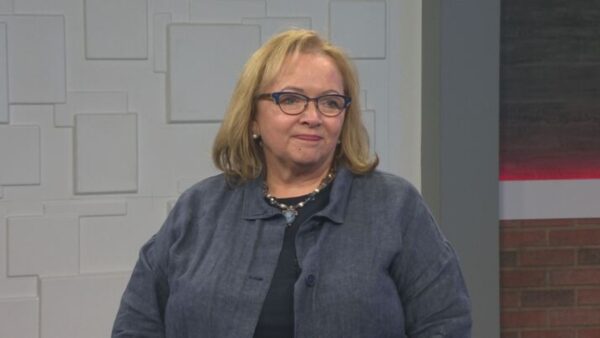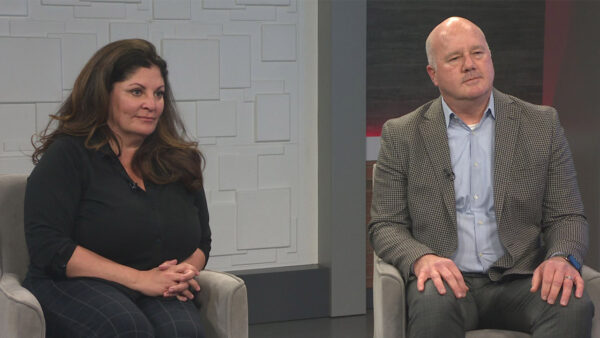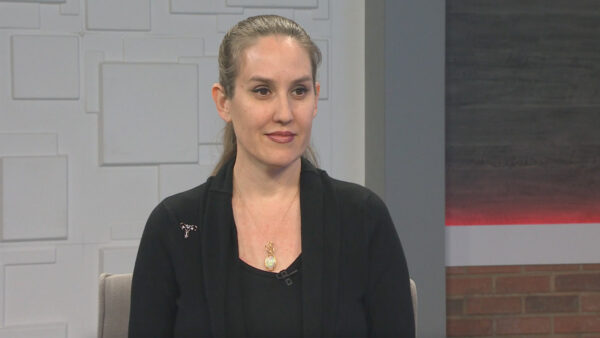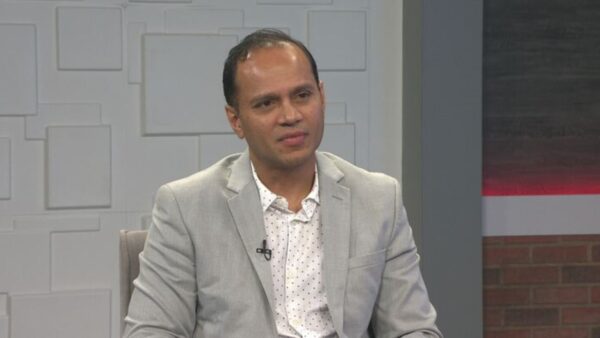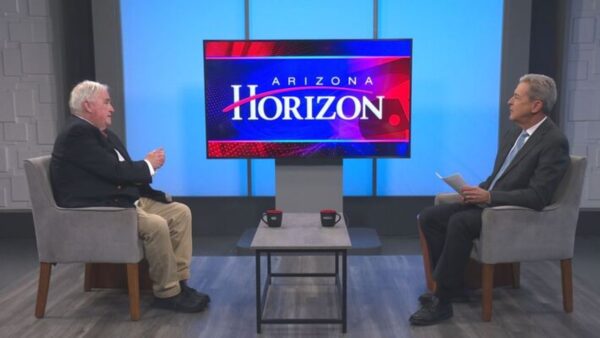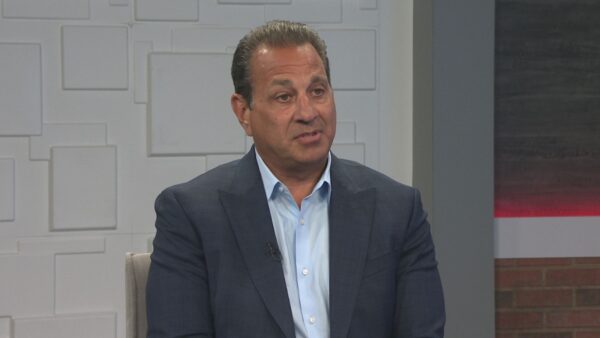Mesa allows portable “a-frame” signs within its downtown redevelopment area, but not in the rest of the city. Some small business owners want that restriction changed. Councilman Rex Griswold and Vice Mayor Claudia Walters discuss the issue.
>>Michael Grant: Tonight on "Horizon", controversy in Mesa over portable A-frame signs within it redevelopment area downtown, but not in the rest of the city. And you may have seen these giant guitars lining streets around the valley. Do you know why they're here? Those stories next on "Horizon". Good evening, I'm Michael Grant. Senator Jon Kyl announced his candidacy for a third term today. It could be a challenging race for Kyl who will face former Arizona democratic chair Jim Petersen. He made his announcement in Phoenix and also in Tucson calling himself a common sense conservative who works hard and listens to his constituents.
>> Kyl: As a member of the house Senate conference committee at the end of 2003, I was one of few who worked very late every night for a long time in a very hot setting I might add to write legislation to reform Medicare and provide a new prescription drug benefit for our seniors, including 600,000 seniors right here in Arizona. Combat illegal immigration, I've on worked on the issue in my first years in the Senate when it was very hard to get people to listen to help secure our borders. A couple of examples: Legislation I introduced and got passed more than doubled the number of border patrol agents and increased the number of customs service personnel fighting illegal immigration.
>> Michael Grant: Senator Kyl will continue campaign announcing tomorrow in Flagstaff and in Prescott. A-frames are the small signs you sometimes see on the side of the street. They point you to a business, service or real estate that is some distance from the street. Small businesses sometimes rely on the signs. If potential customers don't immediately notice the business location. Opponents of the signs say they clutter the view and sometimes are ugly and hazardous. Larry Lemmons introduces us to a small business owner in Mesa who says the signs mean business.
>> Larry Lemmons: Dory Kelly is doing something she is not supposed to do. She is setting up this sign, called an A-frame to direct people to her business, Arizona Music Time. She says the mall doesn't want her to put a sign here and the city of Mesa doesn't want her to put a sign here. In fact, she says she has been cited twice for this one.
>> Doree Kelly: They have not issued a statement of what we should pay so I'm not sure if they're going to enforce the two citations that they left with us.
>> Larry Lemmons: The Mesa city code states A-frames and other portable signs are prohibited within the Mesa city limits except here. This is refurbished Mesa, the area primarily covers Country Club east to Mesa drive and Broadway north to university. A-frames are permitted here because the trees planted to give the area a special appearance also hide the appearance of the businesses. Kelly doesn't think it's fair. She says the A-frames have greatly improved her business.
>> Doree Kelly: Every time and every day that we've had our signs out we have had additional customers, we have had a great business this summer because we have been putting them out. That is what we're here for. To have a good business. And our business has grown. The days when they insisted that we remove them, right away we did not see as many customers come in. So it's been a real plus for us. But we're being told that it's against the law, against the code compliance law. However, we go downtown Mesa and the signs are quite visible. You can see them quite a bit there.
>> Larry Lemmons: Her customers agree the A-frames are useful.
>> Steve Temple: I work down the street for family service agency and I came by one day because I saw they had a sale on the guitars. I wouldn't have noticed the place without it and I bought a guitar for myself and have been a regular customer, here to buy a bass guitar for my son.
>> Larry Lemmons: Kelly and her business partner have been in the Santa Fe shopping mall since 1986. It's in the easy to see their store from Gilbert road. It's expensive to buy a spot on the mall marquee.
>> Doree Kelly: It's rather expensive to be in this mall. For the size of business we have, and the income and revenue, we have adequate space. Sometimes if our business is somewhat less, the rental, the lease is somewhat almost more than we can afford. So we are managing quite well with the space that we have but you can't always buy your visibility, you have to take the spaces that are available.
>> Larry Lemmons: Kelly says she is not alone. She shows this photograph of A-frame signs she says she took outside of the redevelopment area.
>> Doree Kelly: If there are A-frames all over the city and the downtown Mesa area seems to have them legally we feel like it should be something that all citizens in the Mesa and surrounding towns if they so wish that we should all be treated fairly and equally.
>> Larry Lemmons: The two business partners took their case to city hall recently.
>> Doree Kelly: We went to city hall and pleaded our predicament. Several members came to us that morning and told us they understood very well what we were confronting these days and they were for the A-frame signs as they were all over the city so far. And that with the right guidance and the right -- what I want to say, stipulations, that they wanted to bring the vote they had at other times, brought this vote before the Council and it had been defeated even though it's legal downtown Mesa. And so they were assured it would be brought before Council soon and put to vote. If it has to be more than just the Council then I'm sure they'll begin to work on that issue.
>> Larry Lemmons: Like any small business owner, Kelly knows the survival of Arizona music time depends on the business that comes her way. She says considering her location, the A-frames point the way to a more profitable direction.
>> Michael Grant: Mesa Council member Rex Griswold supports the change in the Mesa ordinance concerning A-frames. Larry Lemmons talked with him earlier today.
>> Larry Lemmons: In the redevelopment area and A-frames essentially exist all over Mesa and she was saying it was unfair. What would your comment be?
>> Rex Grisworld: I'm known as an advocate for small business on the Council. I think the two can work together. I think particularly in older neighborhood, good strong small business help neighborhood and neighborhoods help small business. Some of our old strip malls have large signs that the owners are afraid to get into, if they do the grandfather clause goes and they lose the sign. We have a lot of signage many of the renters can't participate on. I'm not for uncontrolled signs throughout the community but some situation that works with good criteria where a small business can put out a sign, if they meet the criteria, they're not visible from the street, don't have access to a sign on the property and if it doesn't look like it was made by their grandchildren, we can do it. I think we can work something that works well for everyone.
>> Larry Lemmons: What would you say to the argument if you allow the A-frames in, you're going to get a lot of ugly A-frames.
>> Rex Grisworld: That's uncontrolled and what we have now. I just passed the fire department on the way to this interview; they have an A-frame out that's probably illegal. People are using them now. And most using them fairly well, they're not ugly. We use them downtown when we put the new trees in that block everyone's signs, so we allowed them in the one-mile square. People didn't trip over them, there were not lawsuits. They were not ugly. There was a control that made it look professional and nice. Otherwise they're invisible along the streets during the repairs. There's a way to do it right and a way to do it wrong.
>> Larry Lemmons: What's been the history on the city Council on this issue.
>> Rex Grisworld: There's been a lot of fear that I brought up being an advocate for small business, small business saying I can't stay in business, do you want an empty strip mall in a troubled section or one of small businesses. The sign codes are working against it. I'm chairman of the general development committee and I would say it was not warmly received by staff because of the fear of cost of enforcement, etc. That's when we began talking about having criteria, standards. We have proved we can do it downtown. People seem to be a little more relaxed.
>> Larry Lemmons: What do you intend to do in the future?
>> Rex Grisworld: Have all sides look at it and look at adjustment to our code that would allow it with restrained areas and criteria involved.
>> Larry Lemmons: Thanks very much.
>> Michael Grant: Vice mayor Claudia Walters intended to defend the current city ordinance on the program tonight. We learned this afternoon she indicated she would not be able to make it. In her place, but without an official position on the issue is Mesa's planning director, John Wesley. John, are you going to check with the fire department and see what they're using that A-frame sign for?
>>John Wesley: Need to look at that, it sounds like.
>> Michael Grant: Put out two fires for the price of one? Something along that line?
>>John Wesley: A special.
>> Michael Grant: Why are A-frames welcome inside the redevelopment area, or sort of downtown Mesa, and not outside?
>> John Wesley: Okay. The downtown area of Mesa went through some redevelopment several years ago and as part of that there were some narrowing of streets which kind of slows traffic and also the trees that were planted that cover some of the existing building signage, the decision was made to allow the A-frames until the trees grow up and building signs can be more visible and revisit that at some point in the future. We're talking about a small, confined area where we can look at the sign, put them in place, regulate them and make sure they meet the criteria established. We look at the city as a hole, a lot more variance in the types. Higher speed traffic, street signage in place and the general purpose for the sign regulation is to promote the health, safety and welfare of the community. We look at issues in regard to clutter along the street, traffic.
>> Michael Grant: Does ugliness enter in here?
>> John Wesley: There's a desire for quality of construction and general appearance. Ugly I think would be hard concept to say it's about ugly. It is quality of appearance and design.
>> Michael Grant: In both the story we saw as well as the interview with Council member Griswold, both said regardless of whether it's legal or not, they're all over the place. I mean, is there an unenforceability problem associated?
>> John Wesley: It becomes difficult. I'm not in code enforcement, I don't know the details but certainly talking about the downtown area, we're talking about a few blocks. Mesa, 130 square miles. It's a lot of area to police the signs. If they do pop up and sometime they do stay for a while, they are kind of difficult to regulate.
>> Michael Grant: Now if you move inside let's say a strip shopping center, mall or whatever, does that then become the -- is that a city jurisdictional issue or does that become the policy of whatever the mall would have in relation to that sign?
>> John Wesley: That would be the policy of the mall. We're regulating those signs that can be seen from the street. Get back off the street into the parking lot area, area not visible from the street that is not a city concern.
>> Michael Grant: One of the points that Council member Griswold was advancing there was, well, you can do it, you can do it right. Is it possible to construct an ordinance that would do it right? Right kinds of criteria for the signs? Right kinds of ways to display them and for that example, ways that you shouldn't display and use them.
>> John Wesley: We're looking into that. We have been asked by the general development committee to look at options. We are examining those and what criteria, types of materials, if we're going to do it, that they can be as high quality and safe as possible.
>> Michael Grant: Is there a tension between lack of a better term neighborhood activists on the issue and small business attorneys, those who would like to see a loosening in the ordinance?
>> John Wesley: At this point I have not heard of any. There could be. I have not heard of it. .
>> Michael Grant: You mentioned the staff is working on the subject. Where do we find ourselves at this juncture?
>> John Wesley: The first step is to the general development committee, and they will look at it and discuss it. If they agree, it's an issue that should go forward, they will vote and pass it on. Council will look at it and see if this is an issue they want staff to work on. If they do, staff will finalize change and go to for approval before it goes back to Council for approval.
>> Michael Grant: Does the process allow for public input and comment?
>> John Wesley: Certainly. All the meetings are public and there will be notices that are published for those text changes as they move forward so there will be opportunities for the input.
>> Michael Grant: If you wanted to track the issue, does the city of Mesa have a website or way we can check in to see this is coming up next Tuesday?
>> John Wesley: The agendas for the meetings are posted on our website.
>> Michael Grant: It's like Mesa.gov?
>>John Wesley: PhoenixMesa.org.
>> Michael Grant: John Wesley, thank you for joining us.
>> John Wesley: You're welcome.
>> Michael Grant: Around town, a public art project that will benefit an Arizona children's charity. In a moment we'll talk more about that. First, producer Merry Lucero and Scott Olson take note of the pop art. If you like rock and roll, you might want to turn up the volume.
>> Merry Lucero: What are these unusual 10 foot giants lining the sidewalks and roadsides across the valley from Glendale to Tempe. Why are they here? What are they for? They are guitars for a big cause. Big brothers, big sisters.
Music: "Money for nothing and your tricks for free. Now that ain't working, that's the way you do it …"
>> Michael Grant: Joining me to talk Morris Brian has set, CEO of big brothers, big sisters of Arizona. Welcome to the program. That was the visual aspect. Tell us what's going on.
>> Morris Brian: This is really about big brothers, big sisters. This is the 50th anniversary in the valley. We were trying to find a way to do something so unique that we could get our message out to a broader audience and the united way in Cleveland had done this project with the rock and roll hall of fame and fender musical instruments. Fender is here in Scottsdale and we had a board member involved with fender. We set up a meeting and determined this would be a way to get the public attention in such a unique way that we could get our message across for need for more big brothers in the valley. And raise money and do something had hadn't been done before. There's a lot of chicken dinners and golf tournaments. So this has been almost two years in the making and we have, we'll have almost 90 ten foot tall guitars on the city streets of Tempe, Scottsdale, Glendale and Phoenix. We had Alice Cooper and mayor Phil Gordon chairing it and it's gotten a lot of unique people involved.
>>Michael Grant: It's eye-catching.
>> Morris Brian: They tell me it's the largest public art project in the history of the state. There have been a number of good project, none this big.
>> Michael Grant: Now, how do they go from being out on the street to translating into cash for big brothers, big sisters?
>> Morris Brian: They're on display until February 4th. And they'll be part of the rock and roll marathon, the Phoenix Thunderbirds are using them for the FBR open, we're involved with the Barrett Jackson auction. We're going to be involved with a lot of high profile events. February 4, at the dodge theater they will be auctioned. We have sold 10, the sponsors have bought 10. When you have Bob Sager, Eddie Van~Halen, we have the Gin Blossoms, Stevie Nicks, we were surprised by those willing to get involved as well as local artists, people from the state of unusual who wanted an unusual pallet to display their work.
>> Michael Grant: These were constructed, obviously decorated extensively and most of that done by local artists?
>> Morris Brian: Almost all the artists are local, Shannon is a John Lennon artist, one of a few authorized by the family. Guitar paint by Home Depot, moved by Dirks Moving and Storage. A lot of companies came together to put this together. I had one offer of $50,000 for the Eddie Van~Halen guitar. He and his son did it; it's called father and son. Senator John McCain did one with a young local artist that is the Grand Canyon.
>> Michael Grant: A lot of different moving parts.
>> Morris Brian: Yes.
>> Michael Grant: Involved here.
>> John Wesley: It's almost like running a separate corporation. We had so many good people. Kathy Waynescott and Ed were the key volunteer leaders who helped me when it first got started. One of the partners at Quarles and Brady. They picked an artist from a competition we had or they could pick their own artist. Most picked from the competition which made it kind of unique because you had a lot of people, including free arts for abused children, most of the children are homeless, as well as some fairly well known local artists like JD challenger, kind of an interesting mix of individuals.
>> Michael Grant: Let's fast forward to early February.
>> John Wesley: February 4 which is the weekend of the FBR open. Hopefully there will be a lot of people to see them. There will be a performance flash auction at the dodge theater. We have celebrity guests that will come and make it a unique evening. We hope to raise 750,000 to a million dollars.
>> Michael Grant: Minimum bid on each one of these guitars and it hopefully goes up from there?
>> John Wesley: Yes. The average has been about 10,000. I do have an offer for one or two that's pretty amazing. I hope people who appreciate rock and roll and appreciate unique art will bid on them.
>> Michael Grant: give us a plug for the big brothers and sisters.
>> John Wesley: At the end of the day it's about the mission of the big brothers and big sisters. We have 2500 children in the program; we have close to 1,000 waiting. We know it works because we have independent studies, including one last year by ASU researchers, that the kids improve grade point and increase in 70% in science and math scores. We measured the outcomes that are a little more on the negative side. Our kids are 46% less likely to use alcohol or drugs, 52% less likely to skip school, 33% less likely to commit an act of violence. The whole thing is about children in the valley who need someone in their life or parents who feel they need another role model in their life.
>> Michael Grant: That is one outstanding fund raising event and a great organization, big brothers, big sisters, we appreciate you joining us.
>> Morris Brian: Thank you so much. Michael Grant: For more information you can go to the big brother big sister website at www.bbbsa.org You can also link to that website from our website, you'll find it at www.az.pbs.org. You can get transcripts of "Horizon" and upcoming program information.
>> Producer: How will John Roberts addition affect the U.S. Supreme Court? Law professors Paul Bender and Cathy O'Grady join Michael grant as we look at the upcoming session and nomination of Harriet Miers Wednesday at 7 on "Horizon".
>> Michael Grant: Thank you very much for joining us on a Tuesday edition of "Horizon". I'm Michael Grant. Have a great one. Good night.
John Wesley:Mesa's planning director;Morris Brian:CEO of big brothers, big sisters of Arizona;

